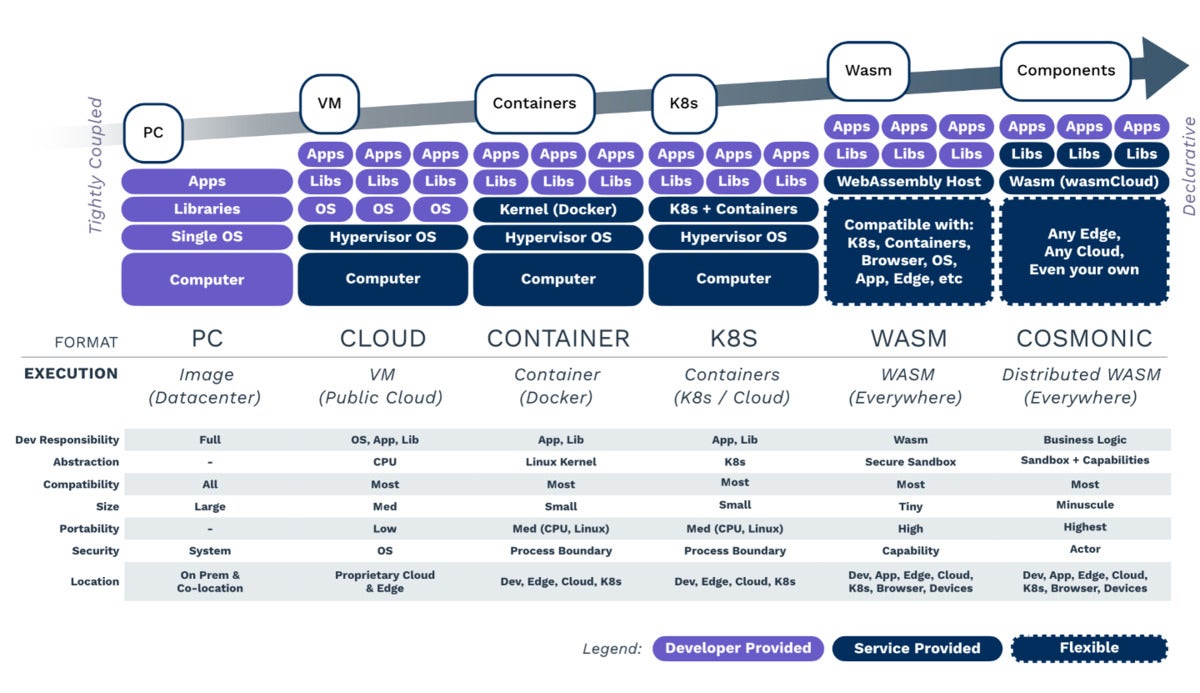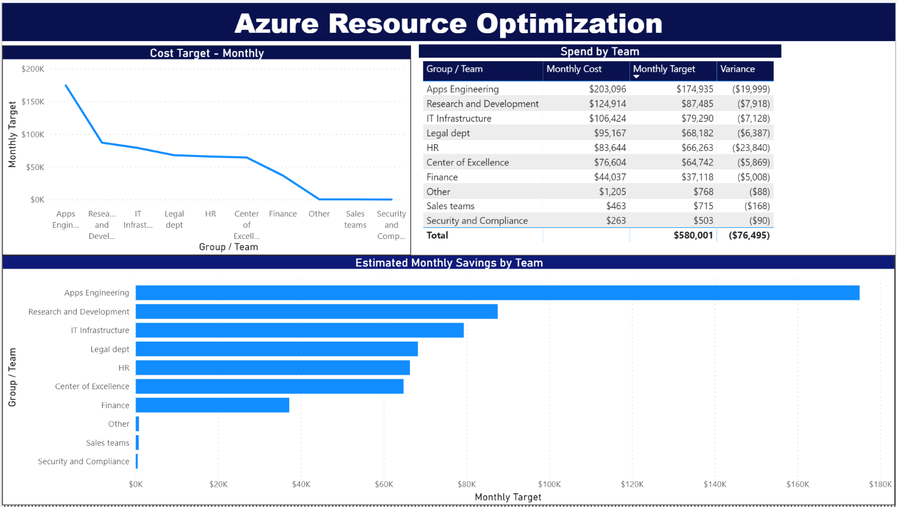💡
Attention readers! We want to let you know that the summaries in this newsletter are generated using cutting-edge generative AI technology. However, we understand the importance of accuracy and quality content, so our team of expert editors manually reviews each summary before it's published. If you feel the quality of a particular summary does not meet your expectations, please leave a comment in the Member Discussion section below. We will rectify it as soon as humanly possible!
Announcing the General Availability of Private Link for Azure Virtual Desktop - Microsoft Community Hub
Private Link for Azure Virtual Desktop is now available, allowing users to securely access their session hosts and workspaces using a private endpoint within their virtual network. This feature enhances data security by keeping it within a trusted and secure private network environment, eliminating the need to expose the service to the public internet. Private Link adds an extra layer of security for Azure Virtual Desktop by routing traffic through the Microsoft backbone network.
#AzureVirtualDesktop #PrivateLink #DataSecurity #softcorpremium
Azure OpenAI Landing Zone reference architecture
Azure Landing Zones provide a solid foundation for building and managing cloud environments, especially when deploying complex AI services like Azure OpenAI. This article explores the synergy between Azure Landing Zones and Azure OpenAI Service, highlighting the architecture and integration of various Azure services to create a secure and scalable AI environment. The importance of network and security features, such as Azure Virtual Network, Private Link, and Network Security Groups, is emphasized for protecting OpenAI workloads. Additionally, the article discusses monitoring capabilities through Azure OpenAI Service and Azure Monitor alerts. Overall, the combination of Azure Landing Zones and Azure OpenAI Service offers a powerful toolkit for building and managing AI applications with governance, compliance, and security in mind.
#AzureLandingZones #AzureOpenAIService #AIapplications #softcorpremium
ARM Deployment Stacks now Public Preview! - Microsoft Community Hub
Deployment Stacks is a new resource type in Azure that allows for the management of a collection of resources as a single unit. It simplifies the process of creating, updating, and deleting resources across multiple scopes. Deployment Stacks also provide capabilities to prevent unwanted changes to resources. Users can easily delete or update resources across scopes with a single call to the deployment stack resource. Unwanted changes can be prevented through the deny settings mode capability. Deployment Stacks can be created at different scopes such as Resource Group, Subscription, and Management Group. The behavior of the deployment stack, including the deletion of resources, can be specified through flags. Users can also exclude specific principals or actions from the deny assignment. Overall, Deployment Stacks streamline resource management and provide more control over resource lifecycles.
#AzureDeploymentStacks #ResourceManagement #StreamlinedLifecycles #softcorpremium
Azure Deployment Stack overview - DEV Community
Azure has introduced a new feature called Azure Deployment Stack that aims to simplify infrastructure deployment and management. With Deployment Stack, users can create deployments using Infrastructure as Code (IaC) templates like ARM or Bicep. The resources deployed through Deployment Stack are managed resources, which helps address challenges such as accidental deletion and managing resource lifecycles across multiple subscriptions. Users can also protect deployed resources from accidental deletion by setting deny settings. Deployment Stack is currently in preview and offers a useful tool for platform teams and those deploying landing zones for other teams.
#AzureDeploymentStack #InfrastructureasCode #ResourceManagement #softcorpremium
Introducing Llama 2 on Azure
Microsoft and Meta have expanded their AI partnership, with Microsoft becoming Meta's preferred partner as they release their new version of Llama 2, a large language model (LLM) pretrained on 2 trillion tokens of public data. Llama 2 is now available in the model catalog in Azure Machine Learning, allowing users to easily discover, customize, and operationalize the models. The partnership also includes integration with Azure AI Content Safety for safer content experiences. Azure Machine Learning offers features such as finetuning, evaluation, and deployment of Llama 2 models, as well as prompt flow for efficient prompt engineering. This collaboration aims to democratize AI and empower organizations, developers, and data scientists to harness the power of generative AI.
#MicrosoftMetaAI #Llama2AI #AzureMachineLearning #softcorpremium
Backpressure controls in Google Cloud PubSub | by Sushil Kumar | Google Cloud - Community | Jul, 2023 | Medium
Google Cloud PubSub has introduced new features to enhance the messaging experience for users. These features include message ordering per-key, exactly once delivery and processing, exponential retries and dead lettering, and flow control mechanisms for push-based subscribers. The post discusses the concept of flow control in PubSub and the need for back-pressure controls to prevent issues caused by transient spikes in incoming traffic. It also highlights the built-in back-pressure control feature of PubSub known as \"Push Backoff\" and provides code snippets and examples to demonstrate its functionality. The post concludes with a reminder to delete cloud resources to avoid unexpected high bills.
#GoogleCloudPubSub #FlowControl #PushBackoff #softcorpremium
How WebAssembly will transform edge computing | InfoWorld
WebAssembly (Wasm) is revolutionizing application development and enabling edge computing. The WebAssembly Component Model is simplifying the development process by abstracting complexities. Companies like Adobe and Amazon are leveraging Wasm to improve performance and reduce costs. Wasm is gaining quick adoption across various sectors, proving to be a powerful and versatile stack in the tech industry. #WebAssembly #EdgeComputing #TechNews
#WebAssemblyRevolution #WasmEdgeTech #PowerofWebAssembly #softcorpremium
Best practices for implementing event-driven architectures in your organization | AWS Architecture Blog
AWS Architecture Blog has published a detailed guide on implementing event-driven architectures (EDA) in organizations. Event-driven patterns are gaining popularity due to their effectiveness in serverless patterns, microservices decoupling, and loose coupling between systems. The blog explores the crucial components of EDA and provides guidance on organizational structures. It emphasizes the division of responsibilities among producers, message brokers, and consumers. The blog also discusses two approaches to ownership of the message broker: decentralized ownership and centralized ownership. It suggests implementing a Cloud Center of Excellence (CCoE) to standardize non-functional implementation and promote a strong DevOps culture. The blog concludes with further resources for building event-driven architectures in AWS.
#EventDrivenArchitectures #AWSArchitecture #CloudCenterofExcellence #softcorpremium
Best Practices for Developing an AWS Co-Sell Program | AWS Partner Network (APN) Blog
The article discusses best practices for developing an AWS co-sell program. It emphasizes the importance of defining clear business objectives, aligning program goals with those objectives, prioritizing education and enablement for the sales organization, securing support from cross-functional stakeholders, leveraging existing AWS resources, and monitoring and iterating program activities for continual improvement. The article also highlights the benefits of adopting AWS Marketplace as a strategic sales channel. Overall, following these best practices can help organizations achieve their business objectives in collaboration with AWS.
#AWSCoSell #BusinessObjectives #AWSMarketplace #softcorpremium
Temporal data lake architecture for benchmark and indices analytics | AWS Architecture Blog
AWS Architecture Blog has released a post detailing a temporal data lake architecture for benchmark and indices analytics in financial trading. The architecture utilizes AWS services to handle large volumes of data, meet strict latency requirements, and scale according to incoming volumes. The post describes a scenario for a financial services industry leader and explains how AWS services are used for bi-temporal processing with state management and scale based on variable workloads. The architecture includes key building blocks such as Amazon Kinesis Data Streams, Apache Flink, RocksDB, Apache Iceberg, and Amazon S3. The solution processes data by transforming it into a row-type record, performing bi-temporal calculations, and storing the results in an Apache Iceberg data store. The architecture is scalable and capable of meeting the end-to-end SLA of 15 minutes, with a potential lowered total cost of ownership. Further reading and resources are provided for those interested in exploring the topic further.
#AWSArchitecture #FinancialTrading #DataLake #softcorpremium
Azure Optimization Mindset - Drive Business Value with Optimization
In order to achieve digital transformation, enterprises must align their business and technology investments in Azure Cloud services. Many organizations have concerns about the cost and lack of visibility into their Azure spending patterns and resource optimization. To address these concerns, enterprises should adopt an Optimization Mindset that focuses on best practices for performance, quality, and cost. This includes implementing tactical optimization measures such as right-sizing resources and decommissioning unused ones, as well as organizational measures like creating a financial operations team and estimating costs. Visibility and accountability are also important, as well as continuously monitoring and automating processes. By following these practices, enterprises can maximize the value of their cloud investments and achieve an optimized cloud services consumption.
#AzureOptimization #CloudCostOptimization #CloudTransformation #softcorpremium
5 Reasons To Run Spark On Kubernetes - CHARBEL NEMNOM - MVP | MCT | CCSP | CISM - Cloud & CyberSecurity
Discover the top 5 reasons to run Spark on Kubernetes, a powerful combination that enhances big data processing and brings scalability to data-driven applications. The intersection of Spark and Kubernetes provides resource efficiency, scalability, isolation and security, unified infrastructure management, and flexibility and portability. By following best practices such as understanding workloads, leveraging autoscaling, persisting data, configuring Spark applications correctly, and using node selectors/affinity, organizations can fully leverage the benefits of running Spark on Kubernetes.
#SparkOnKubernetes #BigDataProcessing #DataDrivenApplications #softcorpremium
Amazon Redshift now supports querying Apache Iceberg tables
Amazon Redshift has announced the preview release of Apache Iceberg support, allowing users to run analytics queries on Apache Iceberg tables within Redshift. This new feature simplifies data processing on rapidly expanding and evolving tables stored in data lakes. Users can now query their Apache Iceberg tables in AWS Glue Data Catalog while other users or applications can safely manipulate the tables using ACID compliant services. This feature is available in all AWS Regions except China (Beijing), China (Ningxia), and the AWS GovCloud (US) Regions.
#AmazonRedshift #ApacheIceberg #DataProcessing #softcorpremium
Top Announcements of the AWS Summit in New York, 2023 | AWS News Blog
The AWS Summit in New York City has begun, featuring a range of activities including a keynote, breakout sessions, networking opportunities, and product announcements. Some of the exciting announcements include the introduction of AWS HealthImaging, a HIPAA-eligible service for storing and analyzing medical imaging data at a large scale. Additionally, Amazon Redshift now supports querying Apache Iceberg tables, and AWS Glue Studio now supports Amazon Redshift Serverless. Furthermore, AWS Glue for Apache Spark now has native connectivity to Snowflake.
#AWSSummitNYC #AWSUpdates #DataProcessing #softcorpremium
Amazon Route 53 Resolver now available on AWS Outposts rack
Amazon has announced that its Route 53 Resolver is now available on AWS Outposts rack. This feature allows users to resolve DNS queries locally, improving the availability and performance of applications running on Outposts rack. By enabling Route 53 Resolver on Outposts, DNS responses can be stored locally, and users can connect with DNS servers in on-premises data centers. This service provides continued DNS resolution during network disconnects and enhances the performance of on-premises applications. Route 53 Resolver can be enabled when ordering a new Outpost or added to an existing one. Users can manage the Resolver using Route 53 APIs, the AWS Management Console, AWS CLI, or AWS SDKs. This feature is available in all AWS Regions with Outposts rack, except in AWS GovCloud (US) Regions. More information can be found in the provided links.
#AWSOutposts #Route53Resolver #DNSPerformance #softcorpremium
CloudWatch Application Insights adds monitoring for multi-app instance deployments
Amazon Web Services (AWS) has announced that its CloudWatch Application Insights now offers monitoring for multi-application deployments residing in the same instances. This feature allows customers to easily set up and monitor multiple applications in one instance, providing individual metrics and logs for each application. This is particularly useful for enterprise customers, such as those using SAP NetWeaver standard deployment, who need to monitor multiple components of a single application. The support for multi-workloads in CloudWatch Application Insights is available in all AWS commercial regions. For pricing information, customers can refer to the Amazon CloudWatch Pricing page.
#AWSCloudWatchApplicationInsights #multiapplicationmonitoring #enterprisemonitoring #softcorpremium
Function calling is now available in Azure OpenAI Service - Microsoft Community Hub
The recent advancements in language models like gpt-35-turbo and gpt-4 have made them even more powerful. By integrating these models with other systems and tools, users can achieve even greater results. Azure OpenAI Service now offers function calling, allowing the models to generate structured JSON outputs based on specified functions. This feature can be used to retrieve data from sources or APIs, integrate with other systems, create structured outputs, and more. However, users must execute the generated calls themselves to remain in control. Function calling works by determining if any specified functions should be called based on the prompt context, and then responding with a JSON object containing the function arguments. It is important to use function calling responsibly by verifying the generated function calls, using trusted data sources, granting minimum access to functions, and considering the real-world impact of function execution. Users can get started with function calling by accessing the Azure OpenAI Service and reviewing the provided documentation and samples.
#AIIntegration #FunctionCalling #AzureOpenAI #softcorpremium
Being Cloud Smart about the EU Data Act legislation
VMware emphasizes the importance of being Cloud Smart and considering future cloud strategies. The Cloud market is rebounding, driven by AI advancements and the promise of more efficient solutions. Organizations, especially in the EU, must consider upcoming legislation, such as the Data Act, which will impact data processing and protection. The Data Act aims to ensure secure data exchange and facilitate cloud interoperability. Non-compliance may result in penalties or a ban on data processing.
#CloudSmart #DataActCompliance #CloudInteroperability #softcorpremium
AWS DataSync now supports copying data to and from Azure Blob Storage
AWS DataSync has announced that it now supports copying data to and from Azure Blob Storage. This means customers can easily move object data between Azure Blob Storage and AWS Storage services. DataSync simplifies and automates large data transfers, integrates with monitoring tools, compresses data before transit, and recovers from network interruptions. In addition to Azure Blob Storage, DataSync also supports Google Cloud Storage, Azure Files storage, NFS shares, SMB shares, HDFS, self-managed object storage, AWS Snowcone, Amazon S3, Amazon EFS, and all Amazon FSx file systems. This support is available in all AWS regions except China (Beijing) and China (Ningxia).
#DataSyncIntegration #CloudDataTransfer #softcorpremium
What’s new for Windows Containers on Azure App Service? - Microsoft Community Hub
Microsoft has announced new capabilities and improvements for deploying Windows Containers on Azure App Service. Customers can now deploy applications with dependencies, migrate from on-premises to PaaS, and take advantage of relaxed security restrictions. Additionally, new memory optimized premium SKUs are available, and customers can use Windows Server 2022 and 2019 as base OS for their containers. The update also includes features such as using secrets from Key Vault, managed identities for pulling images, and application lifecycle and operation improvements.
#WindowsContainers #AzureAppService #MicrosoftUpdates #softcorpremium












